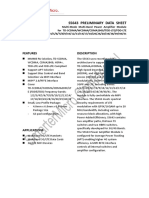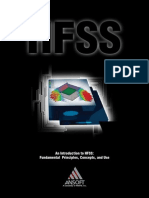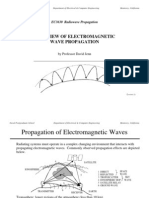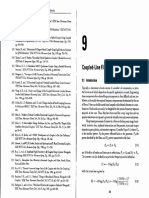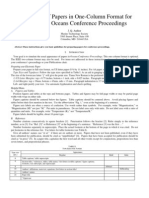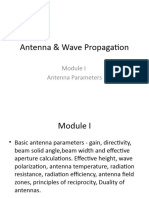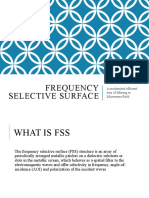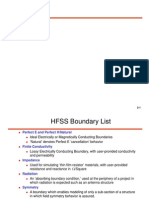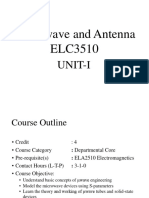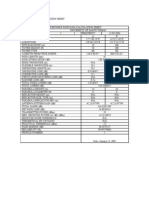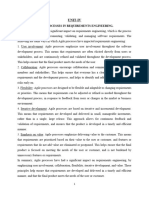100% found this document useful (1 vote)
1K views7 pagesRF Components Analysis at 1 GHz
The document describes the design specifications and simulation results for several microwave components:
1. A branch line coupler with specified substrate material, thickness, trace thickness, characteristic impedances, and electrical lengths for two sections.
2. A biconical antenna with varying half cone angles, frequencies, cone heights, and feed gaps, along with HFSS simulations using discrete and fast sweeps. Input resistance is modeled as a function of half cone angle. A Monte Carlo simulation also varies the cone angle.
3. Additional components mentioned without details are a rectangular PEC cavity and PEC sphere RCS.
4. A single-ended via is also specified with given substrate material and dimensions, and copper for
Uploaded by
sandeepsrikumarCopyright
© © All Rights Reserved
We take content rights seriously. If you suspect this is your content, claim it here.
Available Formats
Download as DOCX, PDF, TXT or read online on Scribd
100% found this document useful (1 vote)
1K views7 pagesRF Components Analysis at 1 GHz
The document describes the design specifications and simulation results for several microwave components:
1. A branch line coupler with specified substrate material, thickness, trace thickness, characteristic impedances, and electrical lengths for two sections.
2. A biconical antenna with varying half cone angles, frequencies, cone heights, and feed gaps, along with HFSS simulations using discrete and fast sweeps. Input resistance is modeled as a function of half cone angle. A Monte Carlo simulation also varies the cone angle.
3. Additional components mentioned without details are a rectangular PEC cavity and PEC sphere RCS.
4. A single-ended via is also specified with given substrate material and dimensions, and copper for
Uploaded by
sandeepsrikumarCopyright
© © All Rights Reserved
We take content rights seriously. If you suspect this is your content, claim it here.
Available Formats
Download as DOCX, PDF, TXT or read online on Scribd
/ 7










